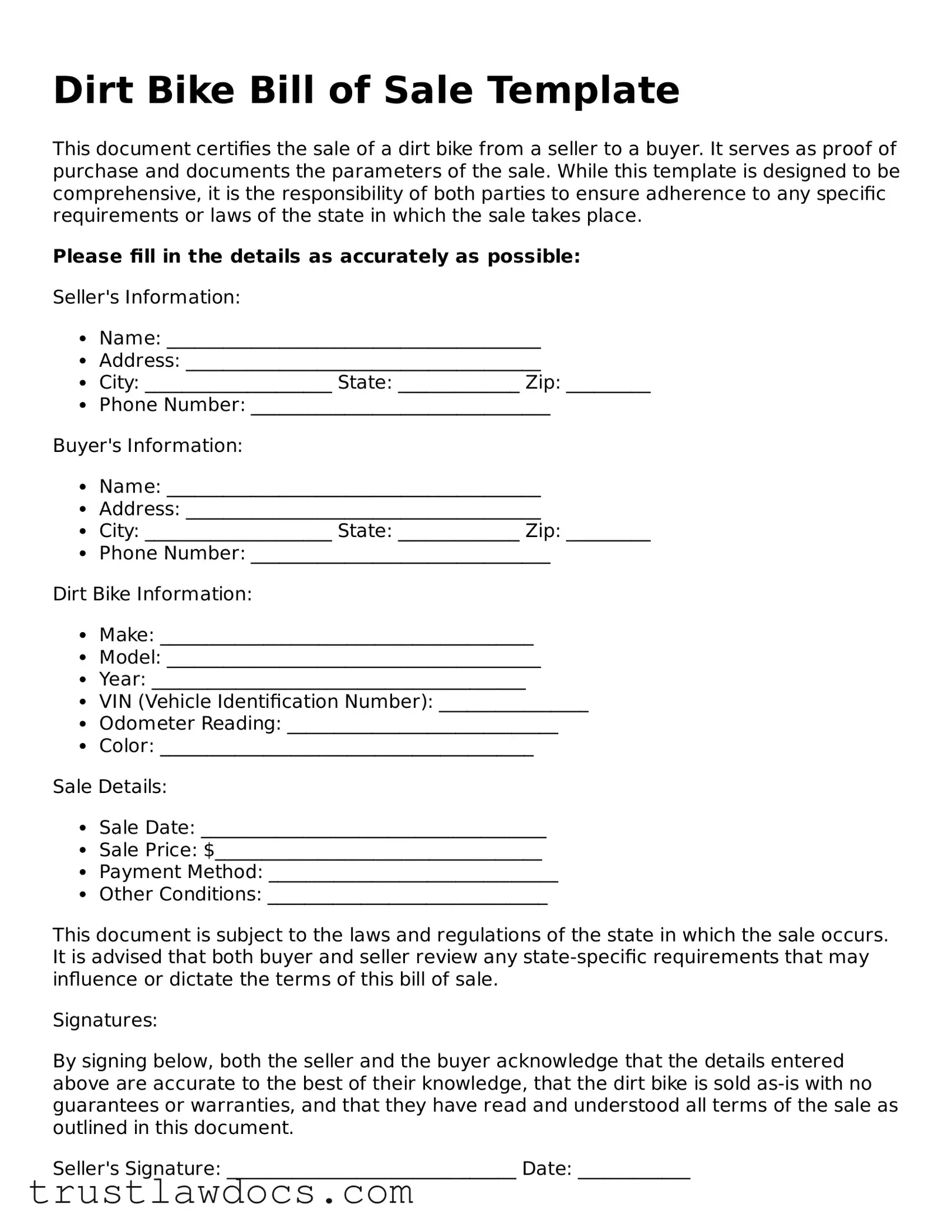What is a Dirt Bike Bill of Sale?
A Dirt Bike Bill of Sale is a legal document that records the sale and transfer of ownership of a dirt bike from a seller to a buyer. It serves as proof of purchase and helps to establish the new ownership of the vehicle. This document typically includes details such as the make, model, year, VIN (Vehicle Identification Number), purchase price, and the names and signatures of both the buyer and seller.
Why do I need a Dirt Bike Bill of Sale?
This document is essential for several reasons. It offers legal protection to both the buyer and the seller in the case of disputes over ownership or the terms of the sale. For the buyer, it is proof of ownership and is often required for registration, insurance, and in some cases, to demonstrate proof of purchase for tax purposes. For the seller, it provides a record that the transaction took place and that responsibility for the dirt bike has been transferred to the buyer.
What information should be included in a Dirt Bike Bill of Sale?
The form should include the seller and buyer’s full names and contact information, the sale date, and specific details about the dirt bike, such as make, model, year, VIN, and any other identifying features. The sale price and payment terms (if any) should also be clearly stated. Finally, both parties should sign and date the document, ideally in the presence of a witness or notary public.
Is a witness or notary required for a Dirt Bike Bill of Sale?
While not always legally required, having a witness or notary public sign the Bill of Sale can add an extra layer of protection and authenticity to the document. The requirements can vary by state, so it's recommended to check local laws to ensure compliance and to provide additional legal validity to the bill of sale.
Does a Dirt Bike Bill of Sale need to be filed with any government agency?
In most cases, the Bill of Sale itself does not need to be filed with a government agency. However, the buyer may need to submit a copy of the Bill of Sale to the local Department of Motor Vehicles (DMV) or equivalent agency as part of the registration process. It's important to check the specific requirements in your state or locality.
How can I ensure the Bill of Sale is legally binding?
To ensure the Bill of Sale is legally binding, make sure all the required information is accurately filled out and that both the buyer and seller sign the document. Using a witness or notary public can also help validate the signatures. Keep the language in the document clear and straightforward to avoid any ambiguity. It's also wise to check if your state has specific requirements or templates for a Bill of Sale.
Can a Dirt Bike Bill of Sale be completed electronically?
Yes, a Dirt Bike Bill of Sale can be completed and signed electronically, depending on the laws of the state where the transaction takes place. Many states recognize electronic signatures as valid. However, ensure that the electronic method used complies with state laws regarding electronic transactions and signatures.
What should I do after completing the Dirt Bike Bill of Sale?
After completing the Bill of Sale, both the buyer and seller should keep copies of the document for their records. The buyer will likely need the Bill of Sale for registration, insurance, and taxation purposes. It's also advisable to check if there are any additional steps required by local law, such as notifying the DMV of the ownership change.
